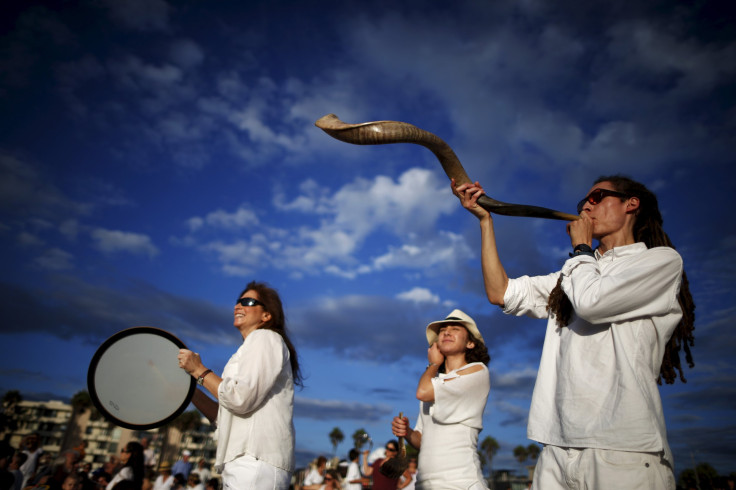
Rosh Hashanah, the Jewish New Year, is a two-day celebration, which begins on the first day of Tishrei, the first month of the civil year, and the seventh month of the ecclesiastical year in the Hebrew calendar. Tishrei usually occurs in September-October on the Gregorian calendar. Rosh Hashanah is the first of the High Holy Days and this year it begins at sunset on Wednesday, September 20 and ends at nightfall on Friday, September 22. As the important day approaches, here are 10 things you need to know about the Jewish New Year.
1) This day is believed to be the anniversary of the creation of Adam and Eve, the first man and woman, and their first actions toward the realization of humanity's role in God's world.
2) Days in the Hebrew calendar begin at sundown, so the beginning of Rosh Hashanah is at sundown at the end of 29 Elul.
3) The rules of the Hebrew calendar are designed such that the first day of Rosh Hashanah will never occur on the first, fourth, or sixth day of the Jewish week (Sunday, Wednesday, or Friday).
4) Rosh Hashanah customs include sounding the shofar (a hollowed-out ram's horn) because the Torah describes the first day of the seventh month (1st of Tishrei = Rosh ha-Shanah) as a zikron teruˁah (memorial of blowing) and as a yom teruˁah (day of blowing). This was interpreted by the Jewish sages as referring to the sounding of the shofar.
5) Rosh Hashanah meals usually include apples and honey, to symbolize a sweet new year.
6) Other foods with a symbolic meaning may be served, depending on local minhag (custom), such as the head of a fish (to symbolize the prayer "let us be the head and not the tail").
7) Many communities hold a "Rosh Hashanah seder" during which blessings are recited over a variety of symbolic dishes. The blessings have the incipit "Yehi ratzon," meaning "May it be Thy will."
8) The Yehi Ratzon platter may include apples (dipped in honey, baked or cooked as a compote called mansanada), dates, pomegranates, black-eyed peas, pumpkin-filled pastries called rodanchas, leek fritters called keftedes de prasa, beets, and a whole fish with the head intact. It is also common to eat stuffed vegetables called legumbres yaprakes. Typically, round challah bread is served, to symbolize the cycle of the year.
9) The most common greeting is Shanah Tovah , which in Hebrew means "A Good Year."
10) Other traditional greetings are: L'shanah tovah tikatevu meaning "May you be inscribed for a good year," Ketivah VeChatimah Tovah which translates as "A good inscription and sealing [in the Book of Life]," Shanah Tovah Umetukah is Hebrew for "A Good and Sweet Year," and L'shanah tovah tikatevu v'tichatemu meaning "May you be inscribed and sealed for a good year."
© 2025 Latin Times. All rights reserved. Do not reproduce without permission.





